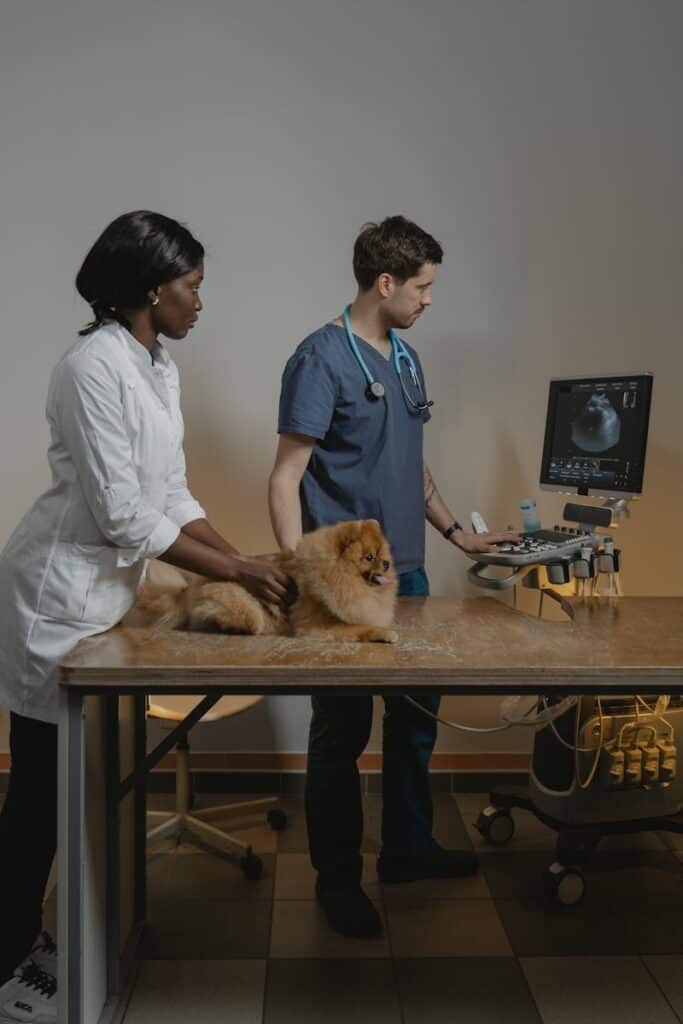Before you can spot signs of illness in your pet, it’s important to understand what is normal for them. Each species, whether it be a cat, dog, rabbit, or other companion animal, has its own unique set of behaviors and physical characteristics. Spend time observing how your pet behaves in their everyday environment — how often they eat, drink, sleep, and play. Get familiar with their usual energy levels and personality traits. Additionally, familiarize yourself with their normal vital signs like heart rate, respiratory rate, and temperature.
For example, the average resting heart rate for a dog ranges between 60 and 140 beats per minute depending on their size, while cats typically have heart rates between 140 and 220 beats per minute. Respiratory rates for dogs should be between 10 to 30 breaths per minute and for cats, between 20 to 30 breaths per minute. Knowing these baselines will help you quickly identify when something is amiss.
Common Physical Signs of Illness

Physical symptoms are often the first indicators that a pet may be unwell. Look out for changes in weight, whether it’s sudden weight loss or gain. Persistent coughing, sneezing, or difficulty breathing can indicate respiratory or cardiovascular issues, while vomiting or diarrhea often suggests gastrointestinal problems. Notice any unusual lumps or bumps on their body, which could signify tumors or cysts.
Sometimes, a pet may have a fever, which can be a symptom of infection. A pet’s temperature can be taken rectally, with normal body temperature typically ranging from 100 to 102.5 degrees Fahrenheit. Red or swollen gums, bad breath, or drooling can be signs of dental problems. Changes in urination habits, such as increased frequency or accidents, may indicate urinary tract infections or more severe kidney issues.
Behavioral Changes as Red Flags

Behavioral changes can often be a more subtle indicator of illness, but they are just as important. A normally active and playful pet becoming lethargic or withdrawn can be a sign of physical discomfort or pain. Increased aggression or irritability, especially if accompanied by growling or biting, should also be noted and addressed with your veterinarian.
Changes in appetite are a significant concern. A pet that refuses to eat or drinks excessively might have an underlying medical problem. Pay attention if your pet is suddenly avoiding interaction, hiding in unusual places, or showing signs of confusion or disorientation. These behaviors might suggest neurological issues or anxiety, which are often treatable when caught early.
Skin and Coat Conditions

Your pet’s skin and coat condition can give you important clues about their health. A dull coat or excessive shedding might indicate nutritional deficiencies or skin conditions. Look for red, inflamed, or itchy skin, as these can signal allergies, parasites, or skin infections. Watch for persistent scratching, chewing, or licking of certain areas. Additionally, inspect your pet for any signs of fleas or ticks, as these parasites can cause serious health issues if left unchecked.
When to See a Veterinarian

Knowing when to seek veterinary attention is crucial for maintaining your pet’s health. While not every change warrants an emergency visit, it’s always better to err on the side of caution. If you observe any combination of the symptoms mentioned above, or if a symptom persists for more than a day or two, it’s time to make an appointment with your vet. Trust your instincts as a pet owner; if something feels off about your pet’s behavior or appearance, professional advice is always a good idea.
Always keep an open line of communication with your veterinarian. Keep them informed of any changes in your pet’s health or behavior and follow their advice on routine check-ups and vaccinations. Remember, early detection and intervention can make a significant difference in treatment outcomes and your pet’s overall quality of life.
Conclusion

Your pet relies on you to notice when they are not feeling their best. By understanding normal behaviors, recognizing physical and behavioral red flags, and knowing when to contact a veterinarian, you can help ensure your pet leads a healthy, happy life. Stay observant and proactive, and you will be better equipped to address any health concerns that arise with your beloved companion animal.
- These Animals Show Unbelievable Human-Like Emotions - August 21, 2025
- Texas Is Home to the Fastest Land Animal in North America, and It’s Not What You Think - August 21, 2025
- Why Great White Sharks Are Getting Bigger Than Ever - August 21, 2025

